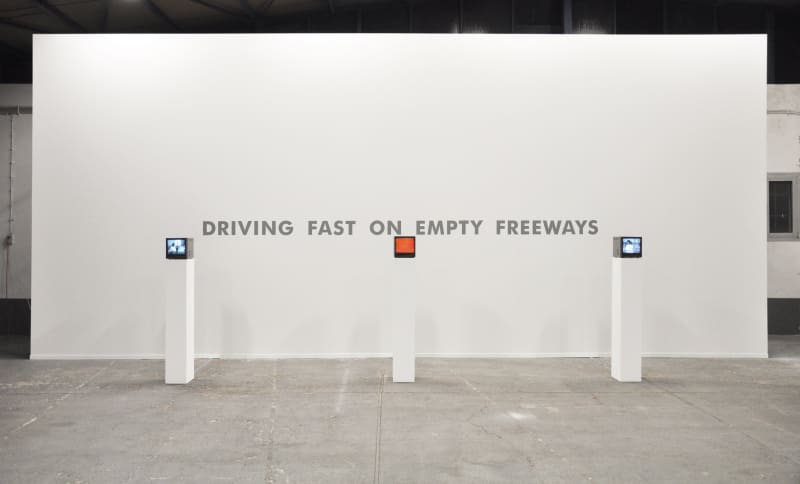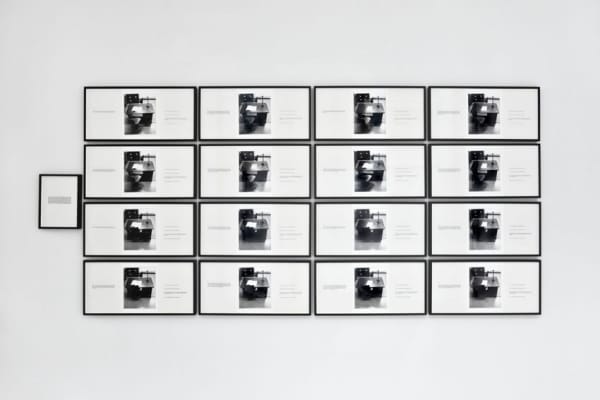Three Decades: Victor Burgin
-
介绍
On Friday, 27 April 2012, Galerie Thomas Schulte will open Three Decades, its first exhibition of works by the British artist, Victor Burgin.
Victor Burgin first came to prominence in the late 1960s as an originator of Conceptual Art, when his work appeared in such key exhibitions as Live in Your Head: When Attitudes Become Form (1969) and Information (1970). From the 1970s his work consisted mainly of photographic sequences, with printed texts juxtaposed with the image. At the beginning of the 1990s, he turned to digital video, but video from the point-of-view of photography – seen, for example, in his concern with the relation between stasis and movement – and most recently he has worked with 3D computer modelling. However, as the art historian Stephen Bann observes: “This progressive exploitation of new technologies is itself fairly uninteresting compared with the remarkable consistency of the underlying themes and propositions of his work.” (Stephen Bann, Victor Burgin’s Critical Topography, in: Relocating, Arnolfini, 2002)
The exhibition opens with Burgin’s work of 1971, Performative/Narrative, where he first introduces the element of narration that has characterised his work ever since. The hermeticism of early conceptualism is nevertheless evident in the rigorously recursive formal structure of this piece. Burgin’s narrative turn soon brought politics into his consideration. In his post-conceptual works up to 1976 – perhaps best exemplified in his street posters from this period – politics is defined mainly in Marxian terms of economic class. The influence of the women’s movement subsequently led him to engage with the politics of gender. From the late 1970s into the 1990s, his attention shifted from gender issues to questions of sexuality as he combined socio-political insights with those offered by psychoanalysis.
For example, his work of 1978, Zoo 78, the centre-piece of this exhibition, brings together themes of the society of surveillance (Michel Foucault’s “panopticon society”) with scenarios of the sexually-invested drive to master through looking. Burgin’s 1982 work, Gradiva, from his Tales from Freud series, is a laconic evocation of Freud’s 1907 commentary on Wilhelm Jensen’s 1903 novella. A mise-en-scène of sexual misrecognition, this work also represents a further stage in Burgin’s elaboration of narrative forms specifically adapted to the gallery wall (for example, his lapidary paragraphs may be read not only from left-to-right, but from each extremity to the centre).
Burgin’s early video piece, Love Stories #2 (1996), returns to the theme of “desiring through substitutes” central to Gradiva, but now played out in minimal scenarios from Hollywood cinema: a woman is attracted to a man because he reminds her of her father; a man is attracted to a woman because she reminds him of another woman; a woman despairs at her inability to match the perfection of her own ideal self. The philosopher Henri Bergson notes: “Perception is never a simple contact of the mind with the object present; it is completely impregnated with memory-images which complete and interpret it.” This is perhaps the most consistent of the underlying propositions in Burgin’s work, which constantly asserts the primacy of the space between the viewer and the perceptual world – a space in which the ‘image’ is a virtual entity produced by the refraction of material reality through the prisms of narrative, memory and fantasy.
-
安装图示
-
作品
-
参展艺术家
-
Inquire about works by Three Decades





